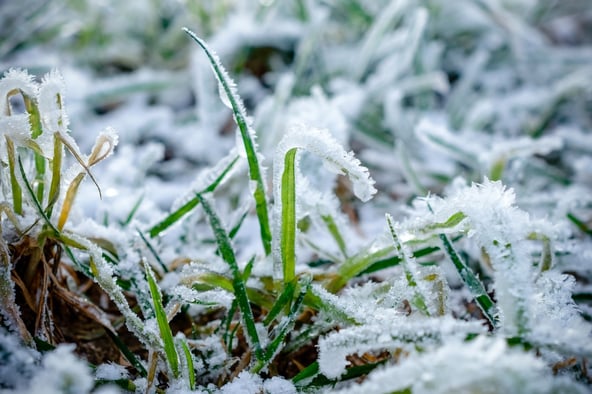South shore lawn care
You may not notice the effects now but there are potential problems lurking in your turf system that can cause major eyesores in the spring. Many homeowners on the south shore are familiar with summertime lawn fungus such as dollar spot and brown patch. Maybe less familiar to some are fungal pathogens that thrive in winter conditions. Snow mold is the most common of these winter fungi and can be classified as either gray or pink. In our current cycle of snow falling and melting within weeks, pink snow mold is the most likely pathogen. Gray snow mold requires consistent snow cover of 70 days or more to survive. In order to achieve the best lawn care on the south shore, we begin thinking about the health of your lawn even in January.

The presence of these lawn diseases will not be realized until early spring and best management practices against an infestation are generally part of your fall lawn care plan by Burgess Turf Management. However, you can still help your lawn's defense of pink snow mold, which thrives in cool, dark, and humid conditions.
- Avoid continuously piling snow and debris on desirable lawn areas. Piles will encourage grass to mat creating prime conditions for the pathogen underneath even after the snow melts.
- If there is no snow in your yard and you can walk on it without causing damage, pick up any large debris that may have blown or fallen in.
- The same as a pile of snow, branches and piles of debris can deny sunlight and warmth to the grass below encouraging the pathogen. The fungus can thrive in the concentrated areas. Come late winter and early spring, it can easily spread to cover large and highly noticeable patches.
Ice can also be a problem for your lawn. As the snow melts, or as rain falls, during the warm days, it can freeze during the cold nights. With grass currently in a state of dormancy not likely to change for several weeks, ice cover is a risk to the health of the lawn. Freeze and thaw cycles can also cause major problems to the plant structure but generally not until the grass is coming out of dormancy.
Despite recent daytime temperatures above freezing, environmental conditions in your yard may allow for the continued presence of ice in localized places. Monitor your lawn for areas of poor drainage and excessive shade. Puddling from drainage issues will promote thick ice that may not melt as quickly. Although dormant, the grass underneath is still alive and needs continued gas exchange. Underneath the ice, oxygen is limited and other gases can build up to toxic levels. The same conditions may exist in excessively shady areas of the yard. Without sunlight, temperatures may not rise high enough to melt all the ice in these spots encouraging prolonged ice cover.
You likely will not do much to solve a poor drainage or excessive shade issue immediately but you can help the turf below an ice issue. Carefully chipping away ice with a shovel or iron rake will allow the turf system to interact with the surrounding air.


